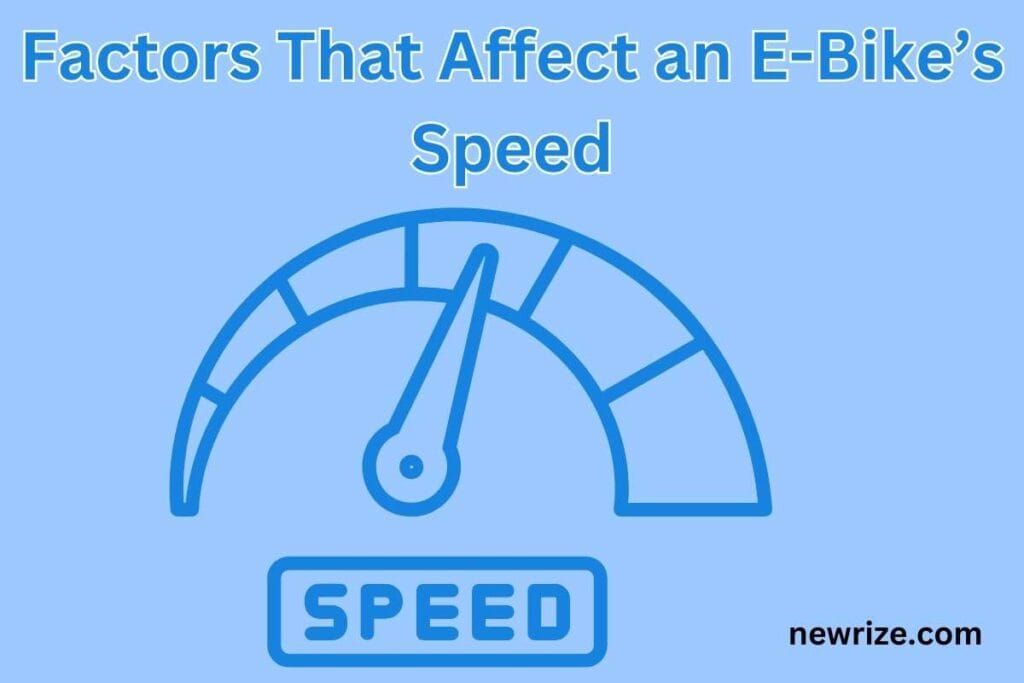How Fast Can Electric Bikes Legally Go? Electric bikes (e-bikes) have transformed transportation by providing a balance of convenience, speed, and friendly to the environment. But how fast can an e-bike lawfully travel? Electric bicycle speed limitations vary by country and region. Understanding these criteria is important, whether you’re a commuter, an adventure rider, or a first-time e-bike user.
In this guide, we’ll break down the legal speed limits, different e-bike classes, factors affecting speed, and how to safely maximize your ride’s performance.
How Fast Can Electric Bikes Legally Go?
The maximum allowed speed of an e-bike varies according to its classification and area. In many countries, e-bikes are subject to various rules that limit their speed based on motor assistance, throttle use, and intended use on highways or bike routes. Some places have severe speed limits for safety reasons, while others allow faster e-bikes under certain conditions. Understanding these criteria allows riders to stay compliant while obtaining the maximum performance out of their e-bikes.
- United States:
- Class 1 & Class 2: Max speed 20 mph (32 km/h)
- Class 3: Max speed 28 mph (45 km/h)
- European Union & UK:
- Pedal-assist e-bikes: 25 km/h (15.5 mph)
- Speed Pedelecs (requires registration): 45 km/h (28 mph)
- Canada:
- Maximum speed: 32 km/h (20 mph)
- Australia:
- Pedal-assist e-bikes: 25 km/h (15.5 mph)
- Throttle-powered e-bikes: 25 km/h unless restricted by law
These speed limits ensure safety on public roads while distinguishing e-bikes from mopeds or motorcycles. If you exceed these limits, you may require registration, insurance, or even a special license.
Read Also: How Many Miles Is a 5K? Ultimate 5K Guide 4 Runners
Understanding E-Bike Classes and Speed Limits
E-bikes are classified according to their motor assistance level and maximum speed. These classifications help regulate how e-bikes are used on roads, bike lanes, and trails. Knowing the class of your e-bike is essential for following the law and choosing the right bike for your needs. Some classes allow throttle use, while others require pedaling for assistance. Let’s explore the main categories:
- Class 1: Pedal-assist only, no throttle, max speed 20 mph (32 km/h).
- Class 2: Throttle-assisted, max speed 20 mph (32 km/h).
- Class 3: Pedal-assist only, max speed 28 mph (45 km/h), requires a helmet and is often restricted from bike paths.
- Speed Pedelecs: Faster than Class 3, reaching 45 km/h (28 mph), often requiring registration.
Understanding these classes helps riders choose the right e-bike based on their local regulations and riding needs.
Factors That Affect an E-Bike’s Speed

Although legal limitations specify the maximum speed, various factors influence how quickly an e-bike may travel in real-world situations. Knowing what factors influence speed can help you improve your ride without breaking the law. Everything matters, from the motor’s power to environmental factors such as topography and wind resistance. Even the weight of the rider and cargo can influence how quickly an e-bike moves. Here are the main factors:
- Motor Power: Higher wattage motors (e.g., 500W, 750W, or 1000W) provide more speed and torque.
- Battery Capacity: A fully charged, high-capacity battery maintains speed longer.
- Weight: The total weight of the rider and bike affects acceleration and top speed.
- Terrain: Hills and rough roads slow down an e-bike, while flat surfaces allow for maximum speed.
- Weather Conditions: Strong winds and extreme temperatures can impact performance.
- Tire Type and Pressure: Properly inflated, smooth tires reduce resistance and increase efficiency.
Can You Make an E-Bike Go Faster Legally?
Many riders wonder if they can increase their e-bike’s speed legally. While tampering with speed limiters or modifying motor power might seem tempting, it often violates local laws and can lead to fines or restrictions. However, there are safe and legal ways to optimize your e-bike’s performance without breaking the rules. Simple adjustments to your riding habits and bike maintenance can make a noticeable difference in speed. Here’s how:
- Use a Fully Charged Battery: A weak battery reduces power output, lowering speed.
- Reduce Bike & Rider Weight: Carrying less weight improves acceleration.
- Maintain Proper Tire Pressure: Low-pressure tires create drag, slowing you down.
- Upgrade to a More Powerful Motor (If Legal): Some regions allow motor upgrades with registration.
However, removing speed limiters or modifying the motor to exceed legal limits can result in fines, voided warranties, and even confiscation in some areas. Always follow local laws to ride safely and responsibly.
Read Also: Brad Marchand Trade Rumors and NHL Trade Deadline 2025
Fastest Electric Bikes Available
Some manufacturers provide performance e-bikes built for off-road or private usage, which allow riders to legally reach faster speeds. These bikes can reach speeds significantly greater than that of regular commuting e-bikes because of their powerful motors and large capacity batteries. There are a lot of fast electric bikes out there, but here are a few of the best:
- Delfast Top 3.0 – Up to 50 mph (80 km/h)
- Stealth B-52 Bomber – Up to 50 mph (80 km/h)
- Sur-Ron Light Bee X – Around 45 mph (72 km/h)
These bikes require special permissions, registration, or private land use in most areas. Always check local laws before purchasing a high-speed e-bike.
Safety Tips for High-Speed E-Biking
Riding an e-bike at high speeds requires extra caution. Increased speed means less reaction time, higher stopping distances, and greater risks in case of an accident. Whether you ride within legal limits or own a high-speed e-bike, following safety precautions is essential. Here are some key safety tips:
- Always wear a helmet and protective gear.
- Follow local speed regulations to avoid fines and accidents.
- Be mindful of pedestrians and slower cyclists on shared paths.
- Ensure brakes and lights are in perfect condition.
- Ride defensively and anticipate traffic movements.
Conclusion
Electric bikes are a fun and efficient way to commute, but their speed is limited by law to ensure safety. Most e-bikes may legally go between 20 and 28 mph (32-45 km/h), depending on their classification and locality. While some high-performance e-bikes can reach these speeds, they frequently require registration or private road use. Understanding the legal restrictions, optimizing performance responsibly, and adhering to safety requirements will allow you to have the finest e-biking experience without breaking the law.
🚴♂️ Do you prefer speed, safety, or a balance of both? Let us know your thoughts!





